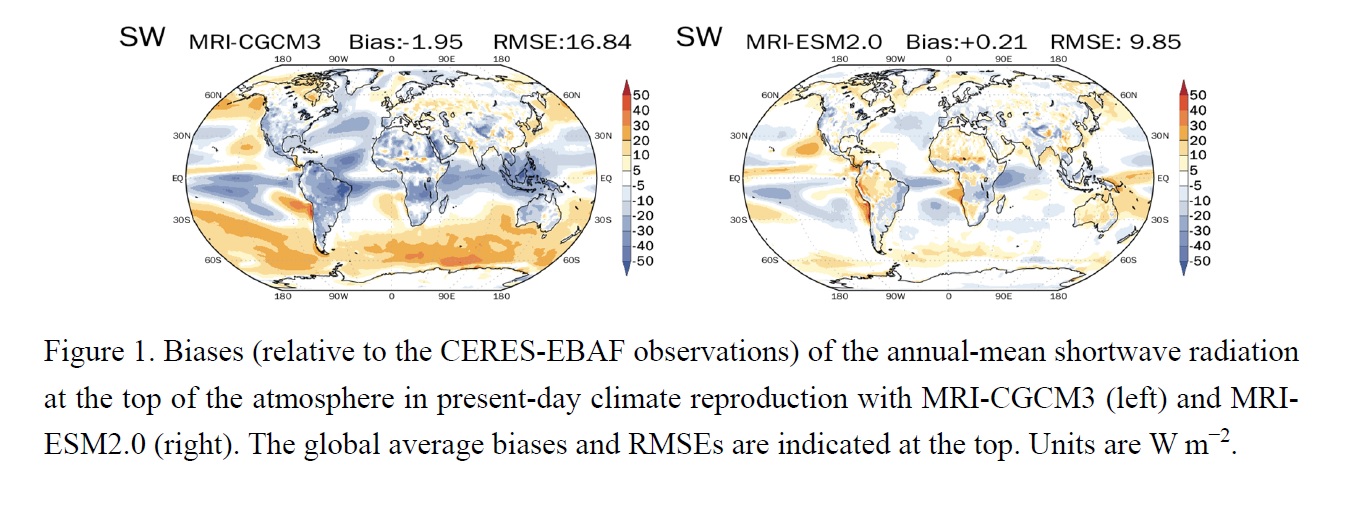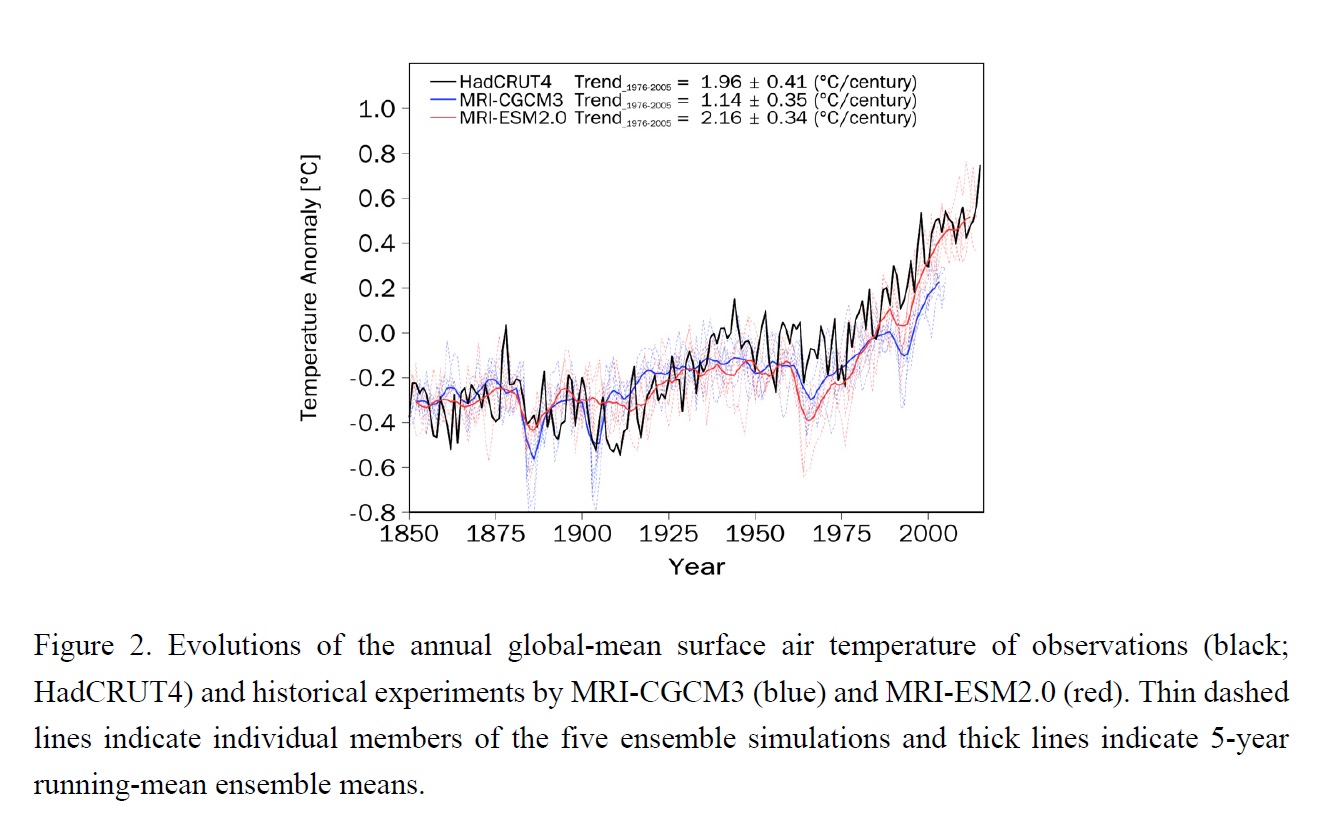JMSJ Highlights
Yukimoto et al. (2019)
Yukimoto, S., H. Kawai, T. Koshiro, N. Oshima, K. Yoshida, S. Urakawa, H.
Tsujino, M. Deushi, T. Tanaka, M. Hosaka, S. Yabu, H. Yoshimura, E. Shindo, R. Mizuta, A. Obata, Y. Adachi, and M. Ishii, 2019: The Meteorological Research Institute Earth System Model version 2.0, MRI-ESM2.0: Description and basic evaluation of the physical component. J. Meteor. Soc. Japan, 97,
https://doi.org/10.2151/jmsj.2019-051.
Graphical Abstract with highlights
Overview:
A new earth system model MRI-ESM 2.0 was developed at the Meteorological Research Institute with
an aim of participating in the Coupled Model Intercomparison Project phase 6 (CMIP6). The new
model has nominal horizontal resolutions of 100 km for atmosphere and ocean components, similar to
the former model MRI-CGCM3 (Yukimoto et al., 2012). The atmospheric vertical resolution is 80
layers, which is enhanced from the 48 layers of the former model. Present-day climate and historical
climate change in the historical experiments by MRI-ESM2.0 are evaluated. As a result of the
enhancement of the atmospheric vertical resolution and various improvements for the cloud scheme,
the aerosol model, and the ocean model, the performance in present-day climate reproduction has
significantly improved in many aspects compared to the former model. Performance is also improved
in expressing the variabilities such as El Niño Southern Oscillation and stratospheric quasi-biennial
oscillation and the historical climate change.
Root-mean-square-errors of the shortwave, longwave, and net radiation distributions at the top of the atmosphere have reduced by about 42%, 34%, and 32%, respectively, compared to MRI-CGCM3. Particularly, the underestimated biases in cloud reflection in the Southern Ocean, which were persistent in MRI-CGCM3 and other CMIP5 models, have been significantly reduced (Figure 1). This improvement is brought by an introduction of a new stratocumulus cloud scheme along with modifications of cloud microphysics processes concerning to the liquid-ice ratio in mixed phase clouds (Kawai et al., 2019). The improved radiation distribution brings the accurate meridional heat transport required for the ocean and contributes to a reduced surface air temperature bias.

The observed global mean surface air temperature change from the mid-19th century to the present is reproduced well (Figure 2), though cooling in the 1950s through the 1960s and warming afterward are overestimated compared with observations. The difference in the warming trend since the 1970s between the MRI-CGCM3 and MRI-ESM2.0 experiments suggests a difference in climate sensitivity to increased CO2 between the models, as the positive radiative forcing of CO2 and other greenhouse gases predominates over negative radiative forcing from aerosols during this period. Climate sensitivity has increased from 2.6 K in MRI-CGCM3 to 3.1 K in MRI-ESM2.0. From the 1950s to the 1960s, the MRI-ESM2.0 experiments showed a marked increase in the simulated sulfate aerosol optical depth, implying that the negative radiative forcing of sulfate aerosol become stronger than before.

References:
Kawai, H., S. Yukimoto, T. Koshiro, N. Oshima, T. Tanaka, H. Yoshimura, and R. Nagasawa, 2019: Significant improvement of cloud representation in global climate model MRI-ESM2. Geosci. Model Dev., 12, https://doi.org/10.5194/gmd-12-2875-2019.
Yukimoto, S., Y. Adachi, M. Hosaka, T. Sakami, H. Yoshi- mura, M. Hirabara, T. Y. Tanaka, E. Shindo, H. Tsujino, M. Deushi, R. Mizuta, S. Yabu, A. Obata, H. Nakano, T. Koshiro, T. Ose, and A. Kitoh, 2012: A new global climate model of the Meteorological Research Institute: MRICGCM3— Model description and basic performance—. J. Meteor. Soc. Japan, 90A, https://doi.org/10.2151/jmsj.2012-A02.






